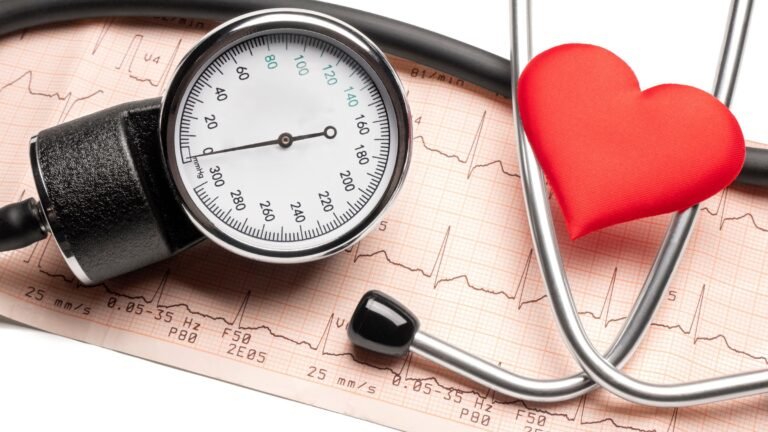What comes to mind when you hear the word 'stress'?
Is it the tension of looming deadlines, the pressure of balancing responsibilities, or perhaps the overwhelming feeling of being stretched too thin? While stress is often painted as the villain in our lives, it’s not always the bad guy. At its core, stress is a natural response to challenges or threats, an evolutionary mechanism that has helped humans survive for millennia. When we perceive danger, our bodies react by releasing hormones like cortisol and adrenaline, preparing us to fight or flee. This acute stress response can be incredibly useful, sharpening our focus and boosting our energy levels when we need it most.
The Biochemistry of Stress: What Happens Inside?
When faced with a stressful situation, the hypothalamus in the brain signals the pituitary gland, which in turn stimulates the adrenal glands to release stress hormones. Cortisol and adrenaline flood the bloodstream, triggering several physiological changes:
- Heart Rate Increases: This pumps more blood to the muscles, providing them with the necessary oxygen and nutrients to react quickly.
- Breathing Accelerates: Faster breathing supplies more oxygen to the brain, enhancing alertness and cognitive function.
- Muscles Tense: This prepares the body for immediate action, whether to fight or flee from the perceived threat.
- Stress Hormones: Heighten awareness and boost energy, ensuring that we can respond swiftly and effectively to danger.
- Suppression of Non-Essential Functions: Functions like digestion and reproduction are temporarily downregulated, conserving energy for critical survival functions.
Curiosity Corner: The Dual Role of Cortisol
Cortisol is often labeled the "stress hormone," but it has several important functions beyond stress response:
- Regulating Metabolism: Controls how the body uses fats, proteins, and carbohydrates.
- Reducing Inflammation: Helps regulate the immune system’s response.
- Maintaining Blood Pressure: Influences the balance of salt and water in the body.
- Aiding Memory Formation: Involved in forming long-term memories.
Practical Example: The Road Crossing
Imagine you’re crossing the road and suddenly notice a car speeding towards you. Instantly, your heart rate spikes, breathing quickens, muscles tense, and your mind becomes laser-focused on avoiding the car. This stress response is crucial for making quick decisions and taking immediate action, like jumping out of the way to safety.
In a modern context, think of preparing for a big presentation at work. The same physiological changes occur: your heart races, you breathe faster, and your muscles might feel tense. This heightened state can help you perform better by staying alert, thinking quickly, and reacting decisively to questions from your audience. The stress response, in this case, boosts your performance and helps you succeed in a high-pressure situation.
When Good Stress Turns Bad: The Transition from Acute to Chronic
However, problems arise when stress becomes a constant companion rather than an occasional visitor. Chronic stress keeps our built-in alert system activated, leading to persistently high levels of cortisol. This continuous state of alertness can have severe consequences on our behavior and health.
Prolonged stress affects our behaviors, making us more irritable and prone to anger. It can lead to procrastination and avoidance, as the overwhelming sense of pressure causes us to delay tasks or shun responsibilities altogether. In seeking comfort, we might develop unhealthy habits such as overeating, smoking, or excessive alcohol consumption.
Beyond behavioral changes, chronic stress has significant impacts on our mental and physical health. It increases the risk of anxiety, depression, and burnout. Physically, it contributes to serious health conditions like heart disease, hypertension, and diabetes, and weakens our immune function. Stress can also disrupt sleep patterns, leading to insomnia, which further exacerbates health problems and stress levels.
Reflect on a recent stressful situation: How did you respond, and what might you have done differently to turn that stress into a growth opportunity?
Turning Stress into Growth: Strategies for Positive Change
The good news is that we can learn to manage stress and even turn it into a catalyst for growth. We know that practices like mindfulness and meditation, physical activity, maintaining a healthy diet, ensuring good sleep hygiene, and seeking social support are effective. However, there are also less common but equally powerful strategies:
- Setting Boundaries: Clearly define your limits to prevent burnout and protect your personal time.
- Improving Communication: Effective communication can reduce misunderstandings and conflicts, lowering stress levels.
- Life-Work Balance: Strive to balance professional responsibilities with personal life to ensure neither overwhelms the other.
- Me-Time: Dedicate time for yourself to relax, reflect, and recharge, which is crucial for mental well-being.
Conclusion: Embrace the Journey
Stress is an inevitable part of life, but it doesn't have to control us. By understanding the biochemistry of stress and recognizing its impacts on our behavior and health, we can adopt strategies to manage it effectively. Turning stress into a growth opportunity is about building resilience, adopting healthy habits, and embracing a proactive approach to well-being.
In the end, stress can be a powerful teacher, guiding us to discover our strengths, redefine our boundaries, and ultimately, grow into more balanced and resilient individuals.






